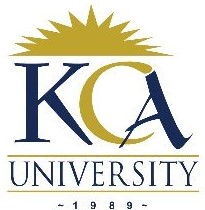
UNIVERSITY EXAMINATIONS : 2016/2017
EXAMINATION FOR THE DEGREE OF BACHELOR OF BUSINESS INFORMATION
TECHNOLOGY
BBIT 304 ADVANCED DATABASES SYSTEMS
MODE: DISTANCE LEARNING
ORDINARY EXAMINATIONS
DECEMBER.2016 DURATION: 2 HOURS
INSTRUCTIONS: Answer Question one and any other two questions
QUESTION ONE [30 MARKS]
a) Briefly explain the following concepts with regard to advanced databases.
i. B+Tree
ii. Hash table
iii. Data warehouse
iv. Database manager
[8 Marks]
b) A database is defined as a shared collection of logically related files that store organizational data.
In this context compare and contrast relational databases and object oriented databases.
[8 Marks]
c) State and explain any FOUR advantages of using a prototype in database application development.
[4 Marks]
d) Discuss the consequences of THREE of interference problems in concurrently executing transactions
in a database.
[6 Marks]
e) Database backup is an important activity during database administration. This exercise involves
copying and archiving the data so it may be used to restore the original data after a data loss event.
In this background, describe FOUR types of database backup.
[4 Marks]
QUESTION TWO [20 MARKS]
a) Study the SQL code below written in MySQL:

State and explain TWO types of integrity used in this code.
[4 Marks]
b) Study the HOTEL table below and answer the questions that follow:

Write SQL statement for each of the following cases:
i. Display all non five star hotels
ii. Update all three-star hotels to 4 star
iii. Display all hotels whose location name ends with letter “e”.
iv. Display the hotels in ascending order of the name.
[8 Marks]
c) Describe any FOUR activities performed by the database designer during the physical design stage.
[4 Marks]
d) Discuss any TWO database access methods you can use in a relational database.
[4 Marks]
QUESTION THREE [20 MARKS]
a) Database tuning is an important activity during database maintenance. Describe FOUR guidelines
followed in database tuning.
[8 Marks]
b) Over time the databases grow in size and unnecessarily use disk space. Additionally, repeated
modifications to the database file may result in data corruption. This risk increases for databases
shared by multiple users over a network. Briefly describe any FOUR guidelines followed in
database repair.
[8 Marks]
c) A database lock is a variable associated with a data item in the database. Describe the difference
between binary locks and multi-mode locks.
[4 Marks]
QUESTION FOUR [20 MARKS]
a) Query processing would mean the entire process that involves query translation, optimization,
evaluation and finally extraction of data from the database. In this respect discuss the FIVE key
steps in query processing:
[10 Marks]
b) A database transaction is defined as a sequence of operations that must be executed as a whole
taking a consistent database state to another consistent state. Describe FIVE states of a database
transaction operation(s).
[10 Marks]
QUESTION FIVE [20 MARKS]
a) You have been requested to design a database for a certain football league. The client has provided
you with the following requirements:
“The league has several teams. Each team has several players, officials and home grounds. A
player can only play for one and only one team. A player has a country of birth but a country can
have more than one player in the same or different teams. Team officials have various
responsibilities in managing the team. But an official can only attend to a particular team. A team
may have one or more home grounds but a particular ground/field belongs to one and only one
team”.
Using Chen’s notation, produce a conceptual database design for this case complete with
cardinalities and optionalities
[10 Marks]
b) With respect to logical database design explain the difference between the following pairs of
concepts:
i. Single valued and multi-valued attributes
ii. Primary key and candidate key
iii. First normal form and un-normalized form
iv. Transitive dependency and partial dependency
[4 Marks]
c) Briefly describe the following types of advanced databases.
i. Temporal databases
ii. Spatial databases
iii. Mobile databases
[6 Marks]
